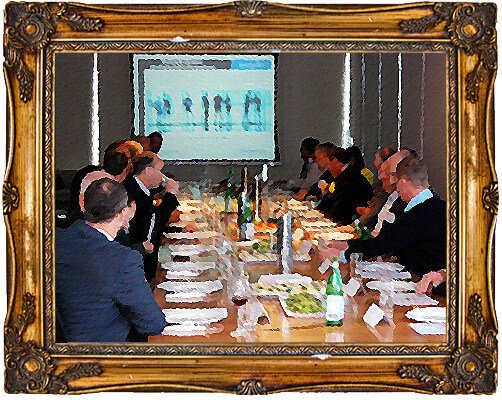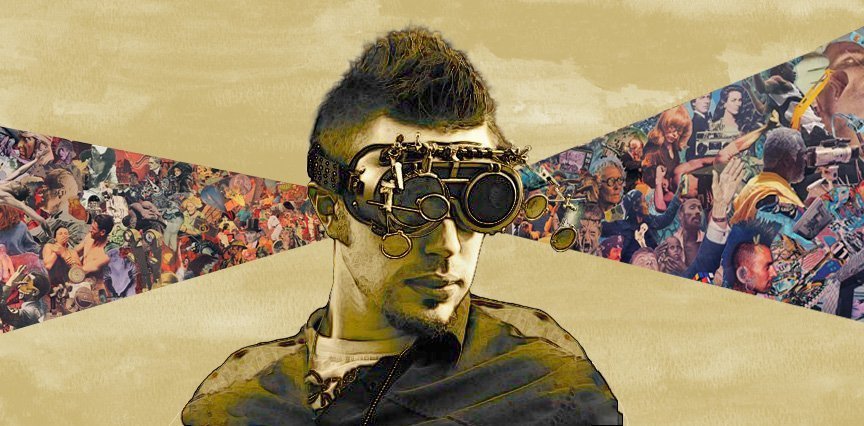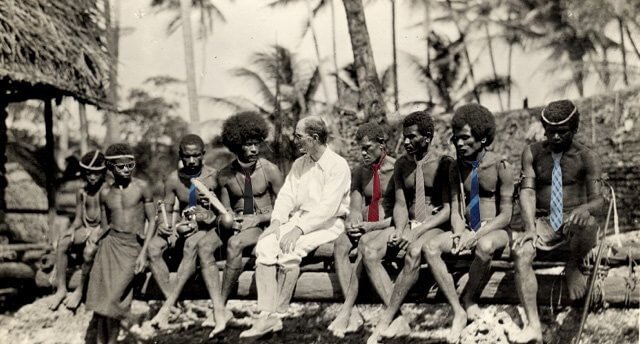Extending Durkheim To Accommodate A Globalized World
Since its first theoretical inception by Edward Burnett Tylor in 1873, the concept of culture has been described as a complex whole with a unifying power that makes it possible to describe different sets of people by a “sort of general average.” For it to encompass “knowledge, belief, art, morals, law, custom, and any other capabilities and habits acquired by man as a member of society,” it has been a necessarily ambiguous concept as well. Tylor’s definition of culture is one that still holds sway today and as such there has been many attempts since to explain and define the universal qualities and processes of culture on every society around the world. Taking on such an endeavor is a formidable task that many ingenious anthropologists throughout its short history have taken on with stride. From Ruth Benedict’s depiction of culture as an integrated whole with a distinct set of traits that, when taken together, can be perceived as forming consistent patterns, to Edward Sapir’s unconscious patterning of behavior in society that is developed through social interactions and perpetuated within a society through tradition. Gregory Bateson’s concept of cultural processes as a system guided by both tradition and ethos and Clifford Geertz’s concept of cultural processes as analogous to a computer program with plans and instructions that govern human behavior.
While there is nothing wrong with the idea of culture as a standardizing force on the beliefs, behaviors, and traditions of individuals within a society, it is a much more complex process than is implied through spatially and ontologically defined concepts of culture. Definitions built upon the idea of distinctive cultures (in the plural) are dependent upon separate and discontinuous spaces between them, as Benedict put it, “between two wholes there is a discontinuity in kind, and any understanding must take account of their different natures” (52). However, the complex system of global processes challenge long-held spatial and ontological assumptions implicit in conventional conceptualizations of culture. In fact, Michel-Rolph Trouillot has argued that, far from being a recent phenomenon, globalization began as early as the sixteenth century because when “the first planetary empires… overlapped or succeeded one another within the modern world system, they brought populations from all continents closer in time and space” (839).
Anthropology has only recently begun to expand its theoretical frameworks in order to come to terms with the idea of a world that is deeply interconnected, exploring the repercussions of a globalized world on both the spatial and ontological divisions that have been superimposed on reality by past conceptions of culture. The hard truth is that the world is not a mosaic of cultures with clearly defined boundaries between each one. Instead the world’s cultures overlap and move about between one another. It may have come to Ruth Benedict’s surprise then, that it was very likely that a culturally integrated Frankenstein’s monster “with a right eye from Fiji, a left from Europe, one leg from Tierra del Fuego, and one from Tahiti, and all the fingers and toes from still different regions” may have already been walking amongst her at the time (40). This Frankenstein’s monster has been brought to life by global movements and mixtures in a process that Ulf Hannerz has termed “creolization” (551).
A common thread between all these theoretical frameworks, albeit one that was previously understated in past conceptions of culture but which has since been brought to the fore in recent anthropological writings is the role of the social. Of course, the power of sociality in the formation and maintenance of human beliefs, behaviors, and traditions is nothing new in the social sciences, playing a foundational role since the days of Durkheim and even before. Durkheim’s conceptions of collective consciousness as representations of reality, including ideas, beliefs and moral frameworks that reinforce social solidarity amongst a group of individuals within a society is just as guilty of assuming clearly spatially delineated and separate cultures and societies. However, the centrality of the social in many classic understandings meant that even in its earliest theoretical musings it was more open to the idea of globalization.
The organic solidarity that Emile Durkheim described as one of the two possible forms of solidarity in the relationship between an individual and his or her society can arguably be viewed as a perfect representation of the functionally interdependent relationship shared between a wine distributor in the United States and a winemaker in France, a blue-eyed Buddhist living in California, or the co-mutual foreign policies between two allied countries. In the conclusion to his seminal work, The Elementary Forms of Religious Life, Durkheim himself envisioned such a globally interconnected world explaining that when “international life broadens, so does the collective horizon; society no longer appears as the whole, par excellence, and becomes part of a whole that is more vast, with frontiers that are indefinite and capable of rolling back indefinitely” (446). In contrast to Benedict’s thoroughly chided Frankenstein’s monster, Durkheim is not only willing to acknowledge the possibility for it, but also acknowledges that the classifications that had formed his social frameworks would need to be reconsidered.
With the complex, overlapping and disjunctive order of the current global cultural economy, Durkheim’s hypothetical vision has not only become the norm, but has taken on a speed, scale, and volume that is unprecedented in human history (see Appadurai, 296). In other words, Durkheim’s two consciousnesses that exist within us as that which pertains to the individual and to the society, central to much anthropological writing since then, must now also include a third: world culture. Unable to ignore the fact that past conceptions of culture have become less than useful under such conditions, many of his contemporaries have taken on the task of determining the organizing principles of cultures today. Thus it can be viewed that recent anthropological writings on space and ontology have arguably been efforts to extend the classic understanding of the “social” to fit both the conceptual and literal expansion of a global system.
On the multigenerational collaborations that take place in the formation and continuation of social cohesion, Durkheim writes, “collective representations are the product of an immense cooperation that extends not only through space but also through time; to make them, a multitude of different minds have associated, intermixed, and combined their ideas and feelings” (15). Fast-forward one hundred years and the anthropologist Ulf Hannerz calls for an expansion of this basic concept into a “macro-anthropology of culture” that addresses how these same kinds of collaborations and intermingling occurs, not only between generations, but on a much larger global scale (547). Like Durkheim, Hannerz believes that social cohesion is formed through common actions but in the analysis of the cultural organization of Third World countries that exist in the periphery of the World System, he finds that “the different cultural streams engaging one another in creolisation may all be actively involved in shaping the resultant forms” (555).
Creolisation is a form of synthesis that is created within the interconnected spaces between, to put it in Durkheimian terms, particular representations of entire consciousnesses. Social cohesion for Durkheim, however, is formed and maintained through profound experiences that invoke sensations of effervescence during ritual events. In this way there is a temporal and spatial requirement to maintain the collective consciousness by reinvigorating the individuals of a society with the sacred power of the collectivity as an experience that is distinct from the profane of everyday life. He synthesized the a priori and empiricist positions by situating social cohesion in the ever-present memory of the ritual experience of a greater, collective, power that is felt to exist outside of the individual. In contemporary societies this power is larger and arguably more accessible, as it can be known to the five senses just by watching an imported French movie, listening to Senegalese music, eating South American food, touching Chinese silk, or doing all of these things at once. More locally relevant is the sense of excitement and invigoration felt in the seemingly unending creativity in the cultural juxtapositions within an expanded world system. However, Hannerz argues that the social organization of complex societies “where there is strain between received meanings on the one hand and personal experiences and interests on the other, and where diverse perspectives confront one another, cultures can perhaps never be completely worked out as stable, coherent systems; they are for ever cultural ‘work[s] in progress’” (550).
It is the Indian anthropologist, Arjun Appadurai, who has begun to theorize the new organizing principles that Durkheim suggested would need to be discovered in a broader, socially organic, international life bound by a logical organization that is ”more and more detached and how, consequently, it becomes ever more impersonal and universalizes” (446). Appadurai proposes a framework of global cultural flows that consist of five dimensions, or “scapes,” with complex and dynamic relations that “are deeply perspectival constructs, inflected very much by the historical, linguistic and political situatedness of different sorts of actors” (296). His analytical purview of a fractalized culture, which can be likened to a human version of chaos theory, includes everything from nation-states, multinationalities, communities, and even individuals, as each actor interacts with somewhat different permutations of the various scapes. Like Durkheim’s notion of modern religions, the only way to arrive at an understanding of complex societies is by “situating each part of the institution within the totality of circumstances in which it was born” (3).
The varied and uneven flows of the different scapes means that a diverse set of cultural artifacts are constantly being perceived within an infinite range of contexts. To Durkheim certain iconic representations, such as totems, serve to remind people of the vivid and powerful forces of collective thought. As diverse perspectives intermingle and are made available one way or another, modern day totems take on a greater significance so that “one may indeed see the social organization of a complex culture as a network of perspectives” (Hannerz, 550). Within the global cultural flows it is inevitable that even the original sources will be confronted with the reinterpretations of their modern day totems and while they may view it as a simulacrum it is inevitable that they will be affected by it as well. In the chapter, “The Impact of the Concept of Culture on the Concept of Man,” Clifford Geertz exclaims, “one of the most significant facts about us may finally be that we all begin with the natural equipment to live a thousand kinds of life but in the end having lived only one” (11). To add to that statement, there are a thousand kinds of ways to live a single life in a globalized world and in the end we will all have lived a singular one.
While contemporary anthropological thinking has extended Durkheim’s concept of the collective conscious and organic solidarity to account for a globally interconnected world, conceptualizing modern cultures as creolized, deterritorialized, fractalized, and hybridized to such an extent that Tylor’s complex whole appears to be an open one as well, that openness should not be construed as an unhindered freedom to live and create new worlds as we see fit. The functionally interdependent relationships of Durkheim’s organic solidarity is built upon a division of labor where each part plays a role in maintaining the proper functioning of a larger entity. Whereas Durkheim was extending the theory of evolution to explain the seeming evolution of “primitive” societies to “civilized” societies, contemporary writers have extended Durkheim’s division of labor concept to explain the production of cultural difference within an interconnected world. Each formulation is processual in nature but the latest derivation challenges preconceived notions of separate and distinct cultures as “others.” The functionalist division of labor in modern global processes is still hierarchically organized, but anthropologists are beginning to explore how “cultural difference is produced and maintained in a field of power relations in a world always already spatially interconnected” (Gupta and Ferguson, 17; also Hannerz, 552). For instance, popular conceptions of modernity and other terms that Trouillot calls North Atlantic Universals has situated the West as the “universal unmarked” and has prescribed what can be considered progress (855).
Even while these views hold that culture is something that we construct, it is a powerful one that drives public discourse. There is a concern that more powerful cultural forces will swallow up weaker ones as “a sort of deadly diffusion” through the sheer volume and scale of their presence within global cultural flows (Hannerz, 555). People living in Lithuania for instance can’t help but to notice the prevalence of American television shows when they turn on their television sets and many Native American communities are facing an alarming rate of language loss even as they seek to participate in a much larger English-language community. Deterritorialized populations, such as immigrant communities, often have a need to maintain some kind of connection with their homeland and may even attempt to create new states of their own (see Appadurai, 304). There is an argument here that maintaining cultural ties to a distant land is analogous to Durkheim’s concept of religious symbolism. Culture groups are still driven to stay connected to the collective subject of their original cultures and continue to practice their traditions either out of a sense of its higher authority or just a desire to continue to maintain themselves as a cohesive group. Durkheim understood that social cohesion needs to be felt on a deep and personal level and the concept of culture is still an organizing force for people, even and especially because the “global cultural process today are products of the infinitely varied mutual contest of sameness and difference” (Appadurai, 308).
Works Cited
Appadurai, Arjun.
Benedict, Ruth.
Durkheim, Emile.
Geertz, Clifford. “The Impact of the Concept of Culture on the Concept of Man.”
Gupta, Ferguson, Hannerz, Ulf.
Kohn, Edward. How Forests Think.
Tylor, Edward Burnett.
Trouillot, Michel-Rolph.





Responses